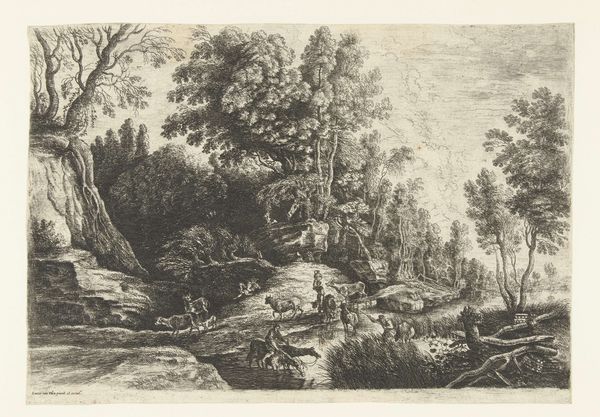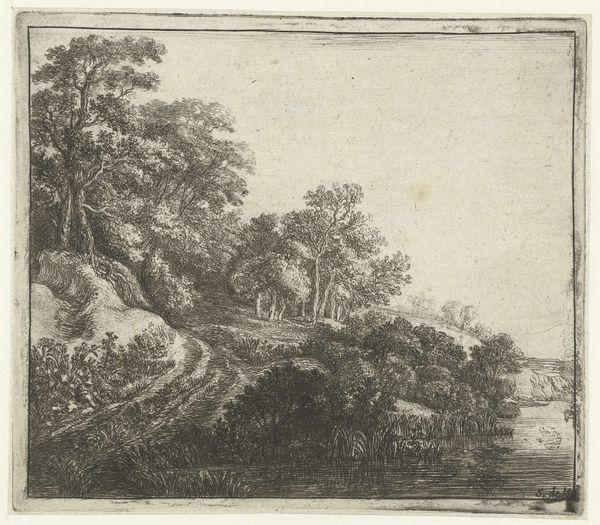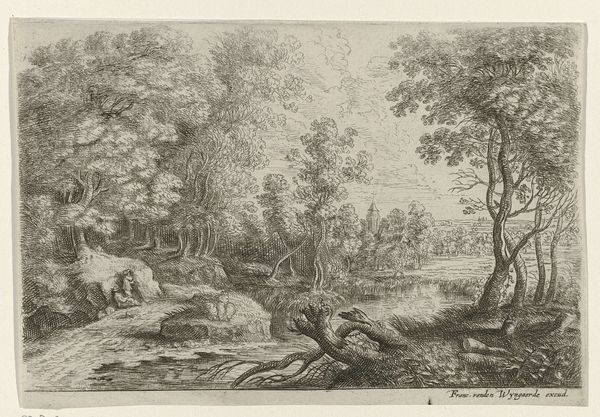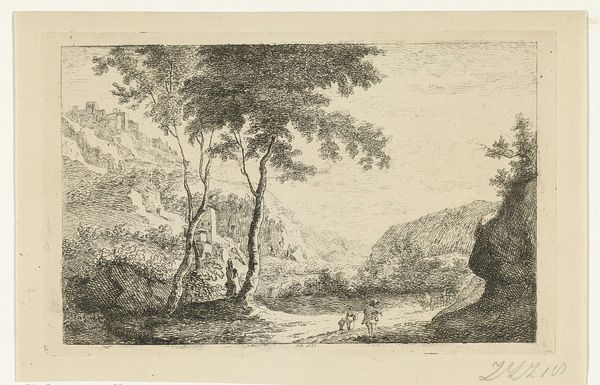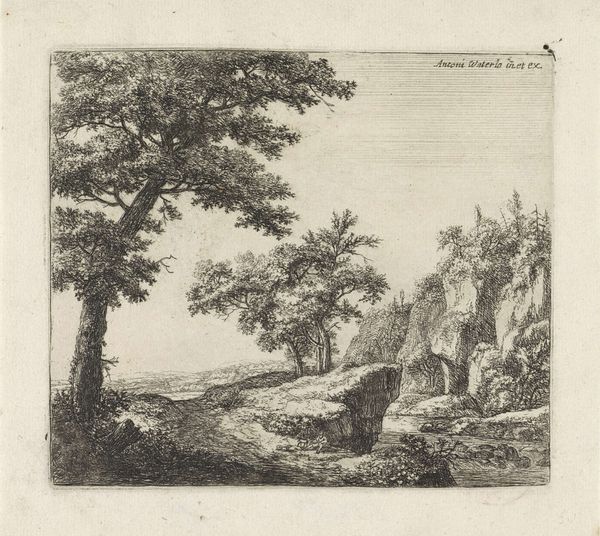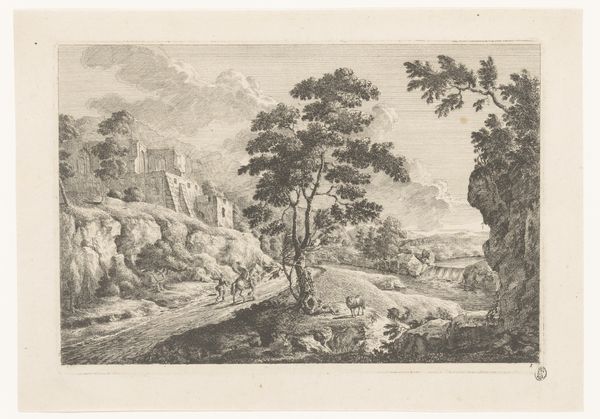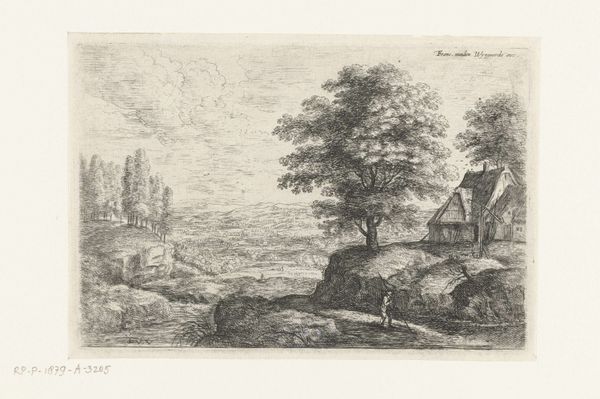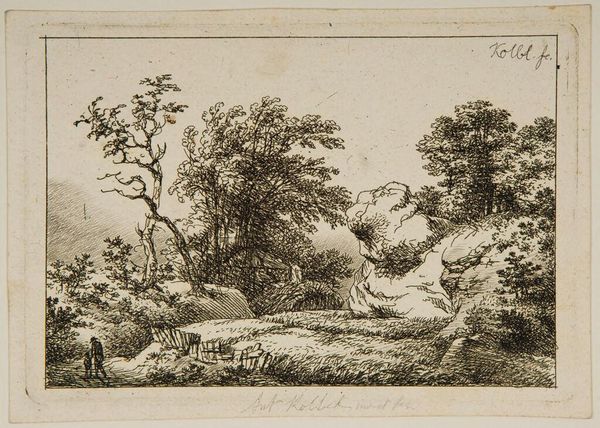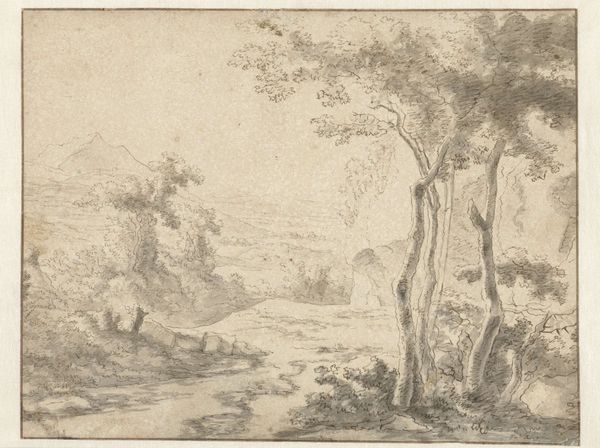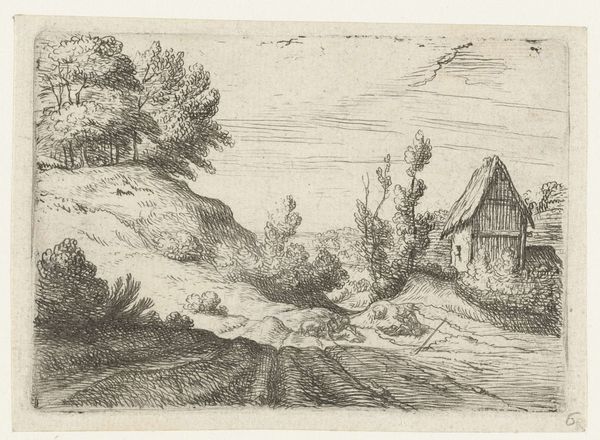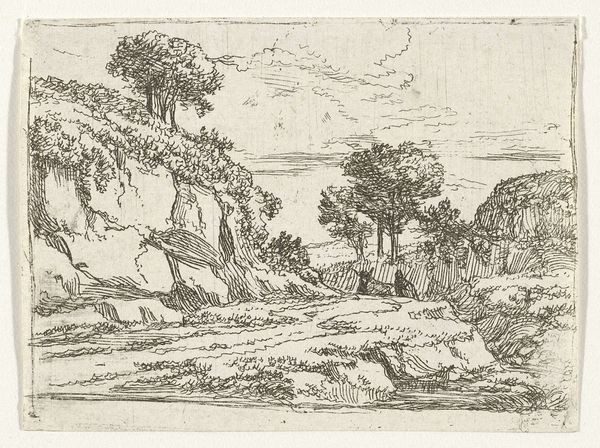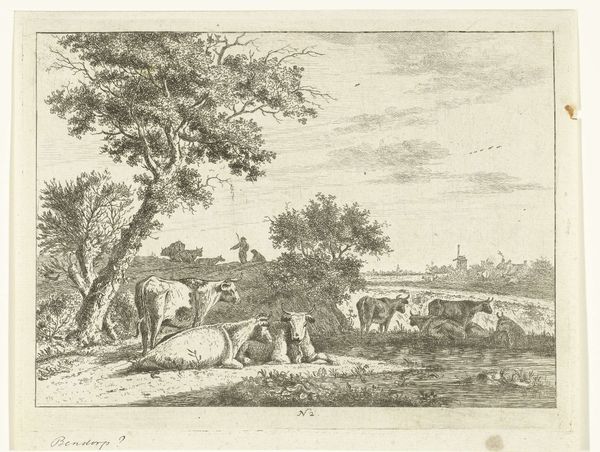
etching, watercolor
#
etching
#
landscape
#
waterfall
#
personal sketchbook
#
watercolor
#
romanticism
#
line
Dimensions: height 108 mm, width 168 mm
Copyright: Rijks Museum: Open Domain
Editor: Here we have "Landschap met waterval en kerk," or "Landscape with Waterfall and Church," an etching and watercolor made in 1828 by Reinierus Albertus Ludovicus baron van Isendoorn à Blois. The detail is amazing! It almost feels like a peaceful snapshot. What draws your eye to this landscape? Curator: What I see is the confluence of nature and culture, quite literally. We have a rather wild, Romantic waterfall scene, yet it's punctuated by the presence of figures engaged in leisure and, crucially, the distant spire of a church. How do you interpret that juxtaposition? Is it harmonious, or something else? Editor: Hmm, I see what you mean. At first glance, the figures enjoying the scene made it seem serene, but the church does introduce another element. It feels almost like a claim – a civilization imposing itself upon the wild. Do you think the artist had a specific social commentary in mind? Curator: I think that’s a very astute reading. Remember, this is the early 19th century. Landscape art was often commissioned by the wealthy to express control, to show dominion over their estates and by extension their world. Isendoorn à Blois, as a baron, belonged to this class. This isn’t just a pretty picture; it reflects social power structures of the time, naturalized through imagery. Editor: So, even seemingly innocent scenes can reflect those power dynamics? The inclusion of the figures – the fisherman and the reclining woman - amplifies this theme of man exploiting natural resources and space, right? Curator: Precisely. The waterfall becomes a picturesque backdrop to human activity, domesticated and brought into service as a cultural marker, rather than experienced solely for its own sake. Think about how public access to these types of landscapes might have been limited at that time. Editor: I had never thought about it that way. It changes how I see landscapes in general! It really challenges that idea of "nature as pure" which is definitely part of the image's charm on the surface. Curator: Exactly. It’s important to remember that art isn't created in a vacuum; it’s shaped by social and political forces. Looking closer always adds complexity, in really insightful ways.
Comments
No comments
Be the first to comment and join the conversation on the ultimate creative platform.

